At the beginning of my cooking life meringue had a defined role in the baking world, crispness. Over recent years I’ve noticed it has become a substitute for pavlova and I would like to put my case why it shouldn’t. Meringues when baked to the point the middle is still gooey and soft causes a problem on eating, as you chew on the meringue the partly baked egg and sugar melts into a sticky mass. The sugar dissolves but not completely and ends up stuck between your teeth until you chew plenty. I explain below why a pavlova is different to a gooey meringue and why it works where a meringue fails.
Sometimes it’s difficult not to produce a gooey meringue. Last week I managed to mess up the baking of the meringues below, I didn’t seem to get the drying of them right. It may have something to do with other baking I was rather too busy doing and not paying attention enough. In the end I had to put them back in the oven for the third time. It gave me the chance to photograph and show what happens with sticky meringue.
You can have an under-baked meringue as in a lemon meringue pie where the interior is only just set and there remains a lot of moisture, or in a baked Alaska, again the interior is barely cooked and some of it might not be cooked at all. There’s a point between those meringues and the type of meringues below which are the ones I would try and avoid.
To show how it’s not only home cooked meringues that fall into the gooey sticky stage, below is a meringue I bought a few weeks back in a well reputed place.
When I broke open the meringue inside I could see still wet uncooked sugar.
This stickyness along with the rest of the meringue on eating will just be crushed into a sort of chewy caramel but not in a good chewy-caramel way.
My Disaster with Meringues
I baked them last week and they were intended for an Autumn Mess, to be added with cooked apples and mixed in with a blackberry & blackcurrant sauce. They didn’t seem to want to dry out.
As soon as I touched them I could feel there was a stickyness about them, they were too soft to touch.
Inside another example of the gooeyness with bits of white sugar & egg still showing.
To show how this meringue would be really irritating on eating it I’ve picked up a piece. The brown part that appears to be baked, I squashed it between my fingers as if it were my teeth chewing on it.
The warmth of my fingers is enough to melt the sugar of the meringue but instead of dissolving and crumbling away like a crisp meringue does, this under-baked meringue becomes hard.
This sticky chewy nugget is not pleasant to eat.
Now if I pick some of the white interior it’s still the same story, not pleasant.
It’s so sticky it becomes part of my fingers…can’t get rid of the dam thing.
Pavlova – Why Are They Different?
Earlier in the year I posted a recipe for Pavlova with Rhubarb in Orange Flower Water here, where I explain the differences between a meringue and pavlova.
The addition of vinegar and cornflour (cornstarch) or cream of tartar changes the structure of the interior in this type of meringue. It stops it going into a semi-caramelised form and enables the interior to stay in a pure soft marshmellow state, a wonderful contrast to the crisp exterior shell.
This pavlova meringue was one of many I experimented with for my Rhubarb Pavlova recipe and the little flecks you see are zest from clementines which adds a wonderful flavour to otherwise bland meringue.
Unlike in the photos of my under-baked meringue above, this white soft interior won’t melt into gooey hard substance but maintains a melting softness, exactly what makes pavlova a pavlova and not a meringue.



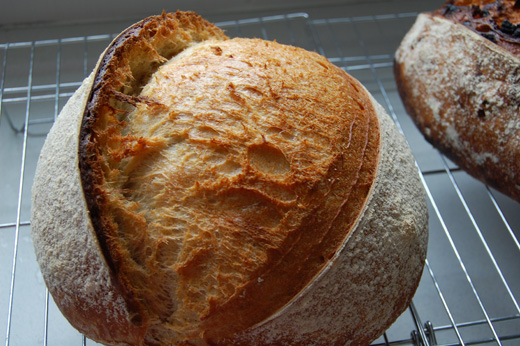

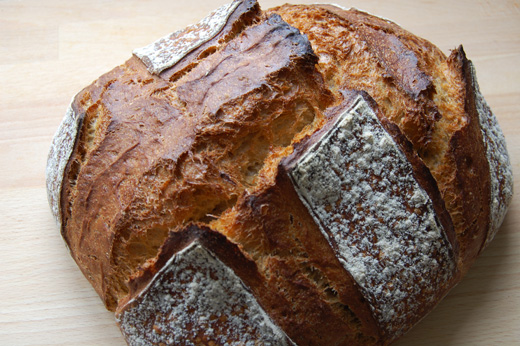



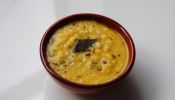


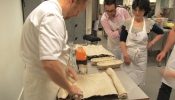








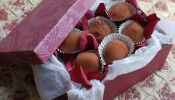

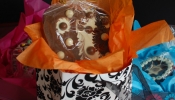



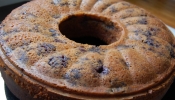


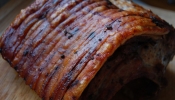

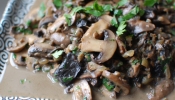

{ 6 comments… read them below or add one }
Are you using a French meringue recipe here? I make mine with Swiss meringue and they always have a thick toffee like center which is sticky but not gooey as in the above pictures
Thanks Luc, you’ve just reminded me of the detail I was going to add and forgot. Yep that makes total sense.
Yep that makes total sense.
These are French meringue and yes making Swiss or Italian meringues would resolve the problem because you’re setting the “air bubbles” created before baking, essentially cooking them twice…by the time the meringue hits the oven the sugar & egg white have already changed in their structure. I have referred to my baking text books but no one seems to deal with pavlovas and under meringue there is very little detailed information.
I adoooore sticky chewy meringues. Not wet, like that shop-bought one, but chewy and sticking to teeth and fingers, yes! I love the contrast of chewy bit to crispy bit.
I also like fully crunchy meringues especially for pavlova and eton mess desserts.
Mmm, Autumn Mess… Auntie Leontia was thrilled when I handed her the last bits to eat straight out of the original bowl, with a big spoon!
Auntie Leontia was thrilled when I handed her the last bits to eat straight out of the original bowl, with a big spoon!
I think it tastes better that way Emily!
Thanks for the tips. I recently made some small meringues, cooked them on a low setting for an hour but left them in the oven overnight. They are sticky to touch but okay to eat. Can I pop them back in the oven again to dry them out (take the stickiness away)? Any thoughts.